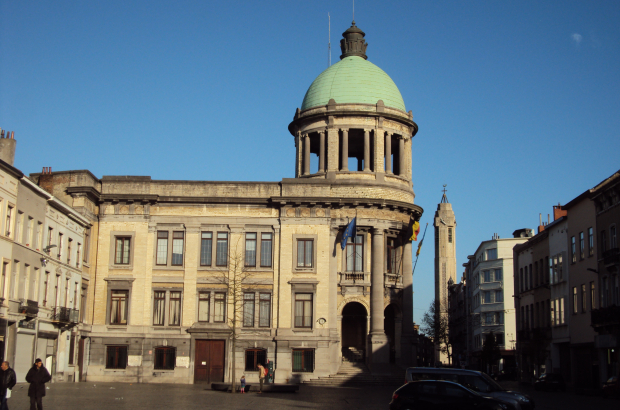- Daily & Weekly newsletters
- Buy & download The Bulletin
- Comment on our articles
Up my street: The Bulletin's neighbourhood guide to Molenbeek
We asked Bulletin readers to tell us what it’s really like to live in Molenbeek, Brussels’ most maligned commune in recent years. While it’s not yet popular with many expats in the way some of the city’s southern areas are, it’s increasing in popularity as waterside warehouses are converted into trendy apartments, and cool cafes and hangouts follow.
One Polish resident of three years describes Molenbeek as “a place to be now and definitely in the future” and is a fan of its multicultural mix and cheap property prices. The church of Saint John the Baptist is “a gem of Art Deco architecture”, while the canal and the people who live in the district are real plus points. Ignace Beulens, a Belgian who’s just moved to Molenbeek, likes how calm and close to the water it is. “There’s lots to explore and places to go jogging, there are lots of new building projects and stunning industrial heritage.” Downsides for him include dirty streets, badly parked cars and traffic problems.
“People greet each other on the street here,” says Dane Mick Madsen. “While parts of Molenbeek appear run-down and ghetto-like, it’s peaceful and suburban-ish. When we moved, the town hall was busy and crowded but actually very quick and efficient. Coming from Brussels 1000, I found everything better.”
One Irish expat has called Molenbeek home for 18 years, having previously lived in Ixelles. “It’s busy, bustling and underrated,” they told The Bulletin. “Scheutbos park is nice and Karreveld Castle is a lovely place to get married!” Their Belgian neighbour, a resident for 20 years, agrees. “Molenbeek is a nice neighbourhood. It’s not unsafe and the multicultural aspect is very attractive. It’s a multicultural area and everyone is very kind. I just want Brussels to be more concerned about Molenbeek and for people to feel safe to invest in a place here.”
An anonymous Spanish resident told us: “When I see other cities, I understand there is nothing that I love about the area. I sincerely want to see changes in property, social and cultural diversity, better schools, more jobs, more security.”
Kristien Viaene, CEO of estate agent NOA, says Molenbeek and the canal area are becoming more popular as developers in Brussels catch up with other cities in making waterside areas attractive to residents and investors. “It’s quite logical: in all European cities, living close to the water is very popular, and Brussels was basically left behind with a really ugly, industrial canal area,” she says. “Developments are moving up north now, because prices are still affordable. It’s still quite a Belgian population, without many expats yet. There are nice areas there, very safe, very calm, if a little lacking in infrastructure, nice shops and restaurants etc. Slowly but surely these areas are leaving behind their rather bad reputation and people are seeing their potential.”
Molenbeek is a good place to discover Brussels’ industrial heritage, including at La Fonderie, the Brussels Museum for Industry and Labour. It’s an old industrial building in romantic disrepair, overgrown with vegetation and patrolled by cats, and featuring exhibitions on the city’s economic and social history and workshops where you can learn how to do bronze casting.
Every Thursday there’s a large market that sprawls from the Place Communale past the town hall, up Rue du Comte de Flandre, to the large square in front of the remarkable concrete church of Saint John the Baptist. The food merchants – including spice and olive vendors – are mostly on the Place Communale. Go early if you don’t want to be crowded.
And to the west of Molenbeek, and accounting for 10% of the district, the Scheutbos offers a wide variety of natural environments: grasslands with grazing cattle, woods and wetlands home to 90 bird species, 30 types of butterflies and a dozen types of mammals. Additionally, 15 acres at the east end are a landscaped park with play area. From the western, more elevated part, the view of Brussels is expansive. It’s here that the army of Louis XIV placed its cannons to bomb Brussels in 1695, destroying thousands of buildings – the first time in European history that civilian areas with no strategic military importance had been targeted for destruction.
Favourite spots:
Karreveld Castle • Chaussée de Gand for clothes shopping • Saint John the Baptist church • The canal • Bel Mundo restaurant • Tour & Taxis event venue • Brass’art cafe • Bruxelles les Bains in summer • Mima urban art museum • Vaartkapoen statue • Zebrano French restaurant and bar • Phare du Kanaal cafe and coworking space • Scheutbos • Buffalo Burger
Positives
- Low property prices
- Helpful staff at town hall
- Proximity to the canal and the city centre
- Calm, peaceful
- Colourful and multicultural
Negatives
- Has a bad reputation
- Insufficient parking places on residential streets and double parking on commercial streets
- Could be a lot cleaner
















